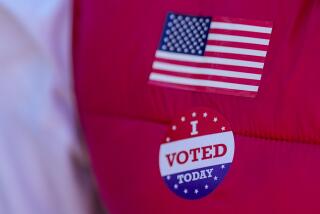Coping with anxiety: Newsmen share strategies, including meditation
When Dan Harris had a panic attack while reading the news on âGood Morning America,â he decided he had to make some changes in his life. âMy panic attack was not only seen by my colleagues but, according to the Nielsen ratings, over 5 million viewers,â he said.
Unlike Harris, whose anxiety started when he was an adult, Scott Stossel, the editor of the Atlantic magazine, has coped with anxiety since childhood. âSince the age of about 2, I have been a twitchy bundle of phobias, fears and neuroses. And I have, since the age of 10, when I was first taken to a mental hospital for evaluation and then referred to a psychiatrist for treatment, tried in various ways to overcome my anxiety,â he wrote in the magazine.
The men have a lot in common. They are high-profile media professionals in their 40s who come from high-achieving families. Harrisâ parents are doctors. Stosselâs father is a doctor and his mother a lawyer.
Both were begged by their mothers not to publish their stories. And both have written bestselling books about their anxiety (Stossel wrote âMy Age of Anxiety: Fear, Hope, Dread, and the Search for Peace of Mindâ; Harris wrote â10% Happier: How I Tamed the Voice in My Head, Reduced Stress Without Losing My Edge, and Found Self-Help That Actually Works â A True Storyâ). They spoke about their struggles at a forum in New York.
Where they differ is how they cope.
Stossel has tried every prescription drug on the market. To deal with the stress of public speaking and flying, two of his phobias, Stossel arms himself with a cocktail of drugs that includes Xanax, Inderal (a heart medication that is used for performance anxiety) and vodka or scotch.
In general, though, Stossel takes the antidepressant Celexa daily and Xanax when he needs it. âI always carry Xanax with me. In fact, I carry two sets of pills in case I lose one.â And writing helps, he said. âI no longer live with a secret. To my amazement, my colleagues never knew I was suffering.â
Harrisâ colleagues did not know either. In his book, he speaks about working as a young reporter who regularly used cocaine, Ecstasy, marijuana and alcohol. âDrugs made me feel better while I was on them, but when they wore off I was miserable.â
Harris has covered wars in Afghanistan, Israel and Iraq and reported from Haiti, Cambodia and Congo. âMy shrink thought that my moods when I came home might be due to missing the rush of being in danger and my drug use was a way to try and bring back the highs,â he said.
Although Harris was prescribed antidepressants, he also tried mindfulness meditation. âAt first I was very skeptical,â Harris said. âI felt my anxiety gave me an edge and kept me competitive. I was wrong. It was ruining my life.â
Meditation is widely used today in schools, workplaces and the military to encourage calmness, relieve stress and focus attention.
For his part, Stossel said he found meditation too difficult. âI am too anxious to sit down and try it. Hopefully one day I will,â he said.
Harris meditates 30 to 35 minutes a day and has introduced meditation to colleagues at ABC News. âThey were all very supportive of my struggles and the fact that I published a book that I feared could end my career. And they saw I was a happier and, hopefully, better journalist and colleague.â
::
Meditation can ease the stress of daily life
Giving meditation a chance â to help with anxiety or just make life a little calmer and less stressful â takes just a few minutes a day.
There are many free or low-cost apps and downloads, as well as classes at meditation and community centers. Some employers and healthcare centers offer meditation instruction. Mindfulness meditation, a common style of practice, has its roots in Buddhism but is not a religious program. It has become secularized through the work of people such as Jon-Kabat Zinn, a doctor and professor at the University of Massachusetts. An estimated 20 million Americans meditate.
Meditation can be done sitting, walking, gardening or cooking, and in as few as five minutes a day, experts say. Whatâs key is focused, nonjudgmental attention to the moment. Often, that is achieved by focusing on breathing.
UCLA offers a free meditation session on Thursdays at lunchtime at the Hammer Museum in Westwood. Itâs often conducted by Diana Winston, one of the nationâs best-known teachers of mindfulness meditation and director of mindfulness education at UCLAâs Mindful Awareness Research Center (www.marc.ucla.edu).
Another mindfulness training group, InsightLA, has been teaching meditation for more than a decade in Los Angeles (www.insightla.org). Free Mindfulness offers various free meditation downloads (www.freemindfulness.org).
âMary MacVean
Follow me on Twitter: @mmacvean
More to Read
Sign up for Essential California
The most important California stories and recommendations in your inbox every morning.
You may occasionally receive promotional content from the Los Angeles Times.










